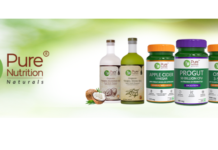New Delhi, August 20, 2017: Shaun Higgins, Managing Director of IML Labels and Systems limited, looks at the importance of approved adhesive labels, face material and print when packaging and transporting chemicals and other potentially hazardous goods.
Consider for a moment that there are currently 55,000 cargo ships, with 1,500,000 sailors on-board, skimming the earth’s surface… a staggering thought. The shipping industry is growing, and as it stands currently transports around 93% percent of the world’s goods by sea. It remains the most cost effective and least environmentally damaging means of transportation, but it isn’t without risks.
The International Maritime Dangerous Goods Code sets out guidelines for shipping harmful goods to ensure any risk to human life, marine life and the environment are minimized in the result of an incident or spillage.
The coordination of an efficient, appropriate and effective response depends largely on the data relating to the substances involved. Therefore, it is absolutely imperative that each container of hazardous goods is identified clearly on the outer packaging, and this calls for particularly resilient labelling. Globally Harmonised System legislation, implemented in 2015, ensures that the packaging of hazardous goods bares a universally standardised label which communicates key data such as:
· Product Name (brand name or chemical name)
· Hazard Statement (recognised phrases describing the hazard)
· GHS Pictogram (black symbol in a red triangle depicting the hazard)
· Precautionary Statement (measures to be taken on exposure)
· Signal Word (describes the severity of the hazard i.e. dangerous or hazardous)
· Supplier (contact info of the manufacturer or distributor)
This information is vitally important to the product handlers, ship’s crew, emergency services and environmental services. It goes without saying that GHS labels carry a lot of responsibility and are best supplied by a manufacturer who understands the rigors of marine shipping and the importance of label durability in this environment.
All chemical container labels used to ship products should conform to BS5609 marine approved standard which tests the performance of the adhesive and print plus resistance to abrasion. BS5609 testing involves label materials being in contact with salt water for a minimum of three months then subjected to analytic performance testing in order to meet the standard.
It’s vital that all labels are manufactured with BS5609 approved chemical drum labels and businesses consulted to ensure the label supplied is an exact match to the product, container and environment.
When displayed on chemical packaging, labels are the first alert to handlers as to the dangers contained within so they need to be ultra-reliable. Although incidents involving chemicals at sea are not an every-day occurrence, contributing factors such as bad weather or a catastrophic event on board the vessel, such as a fire or mechanical failure, cannot be ruled out.
As well as the risk to human, marine, and environmental health, the potential also exists for an adverse reaction between the transported chemicals and water, air, fire, or other chemicals on board the ship. Even perceived harmless substances such as vegetable oil can pose a significant risk to marine life when spilled.
Risk potential needs to be identified and assessed extremely quickly so immediate access to the data is vital.
Evacuations and clean-up operations, whether on the sea, shore, or land, are costly and have the potential for litigation cases and damage to the reputation of the chemical suppliers involved. Even when chemical containers arrive at their destination without incident, if there is no label present the delivery could be rejected, or a fine could ensue.
Manufacturers and distributors of chemicals should consider carefully, when a label is being applied, how that label is expected to perform and communicate. Functionality and durability must be the key factors for selecting a label supplier in this highly regulated sector.
Corporate Comm India(CCI Newswire)




























